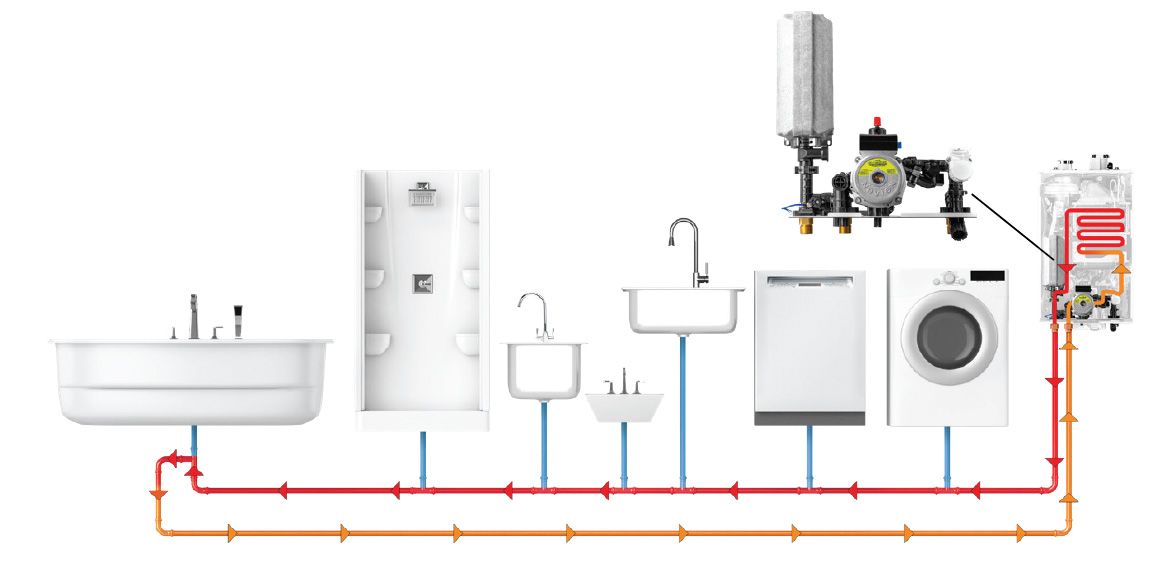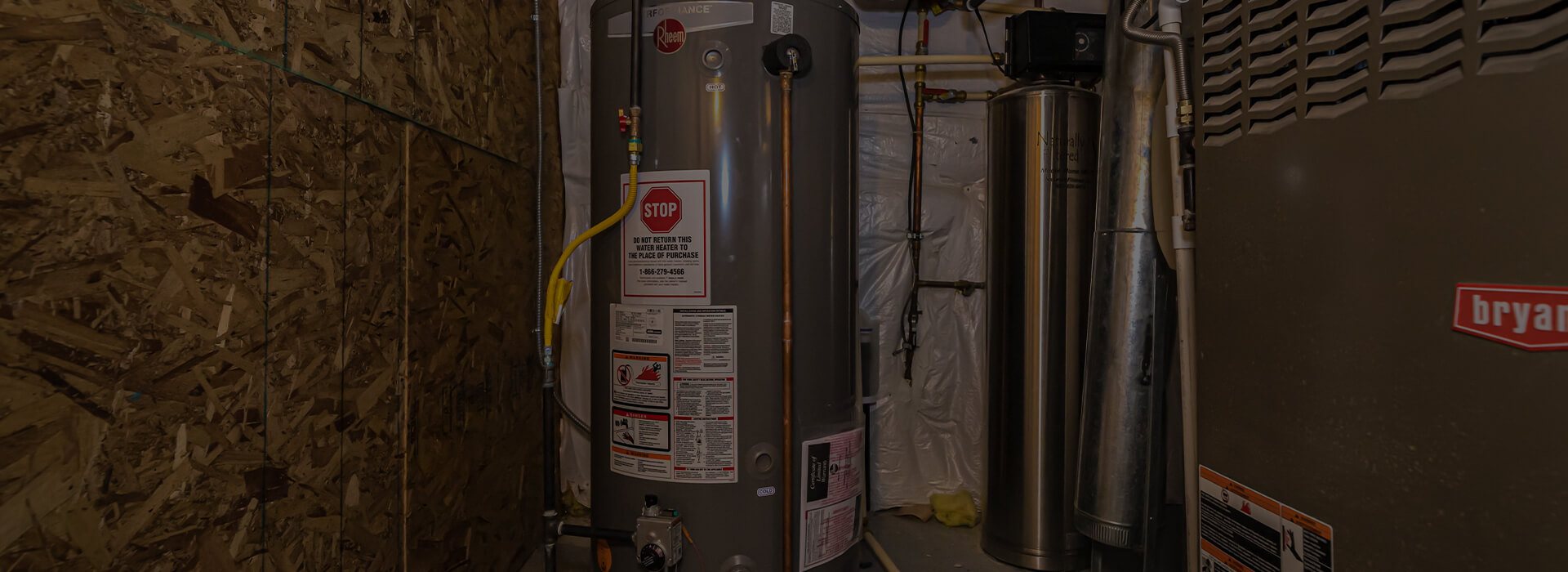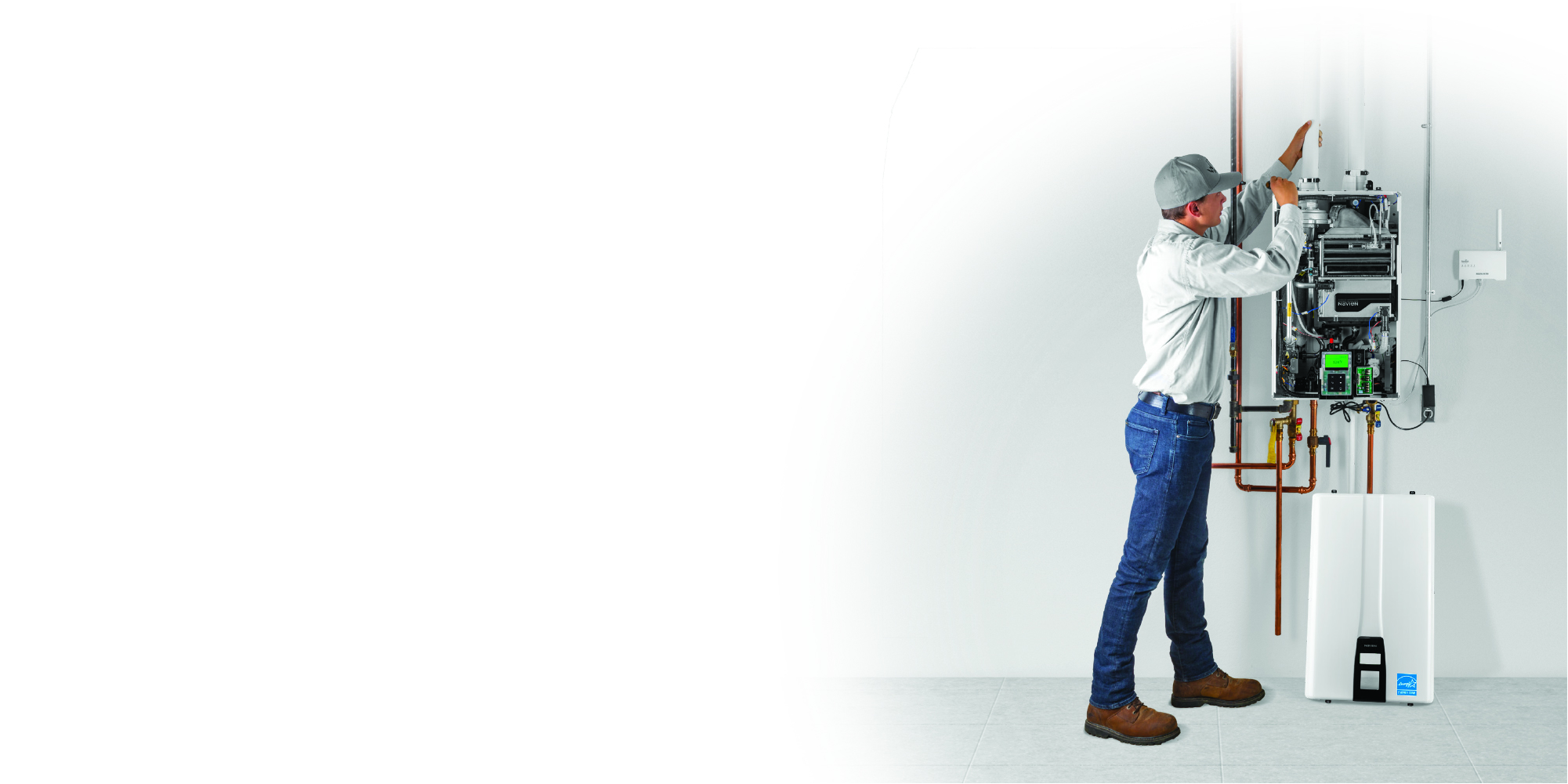
29 Oct Hot Water Re-circulation: Benefits, Drawbacks and Applications
There’s a lot of talk about re-circulation for domestic hot water (DHW), mostly due to new energy codes that are applied to new builds and remodels here in Colorado. I’d like to explain exactly what re-circulation is, some different ways it can be installed and some of the benefits and drawbacks of having it installed in your home.
What is a DHW re-circulation system?
Simply put, a re-circulation system uses a pump to circulate hot water through your home’s pipes regardless if the hot water is running or not. This results in hot water being available at a much quicker rate than a non re-circulating system, leading to much less water being dumped down the drain while you wait for it to get hot. This can be via “controlled” or “uncontrolled” systems, which we will dig into in the next section
Controlled Re-circulation
Controlled systems use timers or computer controlled pumps to regulate when and for how long the re-circulation is running. This is important because it helps save energy by not continuously running the pump and water heater. This leads to more efficient homes and businesses. Some pump controllers have a “learning” capability, where the system will learn your schedule for maximum efficency.
Uncontrolled Re-circulation
This style has fallen by the wayside in recent years due to inefficency. Uncontrolled systems run constantly, using more energy and wearing out water heaters faster.
3 Pipe Re-circulation
3 pipe systems have a “dedicated” return line for the re-circulated water to return to your water heater. This is the most ideal system for new builds and major remodels because of its higher flow rate and more simple design. Hot goes thru the regular hot line to the farthest fixture and recirculates back thru the dedicated re-circ line.
2 Pipe Re-circulation
This is the best system for a retrofit. It allows for the cold water line to be used as a re-circulation line, saving the cost and repairs of opening up drywall to run a dedicated line. A valve is installed under the farthest sink which lets water cross from the hot to cold line, just enough to keep the hot line warm
Domestic Hot Water Re-circulation: Is it for me?
Codes dictate that if your farthest hot water plumbing fixture (sinks, showers, laundries etc) is more than 50 feet away from your water heater, you must have a DHW re-circulation system. This applies to the Denver Metro as well as the rest of the State of Colorado. Although this is the farthest you can be without re-circulation, shorter distances do benefit from having it. Dumping several seconds to minutes of water down the drain is far from ideal. Average kitchen faucets and showers run 1.5-2gpm (gallons per minute), so there is large potential for saving hundreds if not thousands of gallons per year. However, small homes with all plumbing fixtures close to the hot water source (think cabins and singe bathroom homes) adding a re-circulation system can give you little to no benefit.
With DHW recirculation, your water heater will need to periodically turn on to keep the water warm in the lines, which does slightly increase energy use. So its important to weigh the benefits and decide what is best for you application and your family.
Author
Simmilar Posts
After years of working as a plumber and installing water...
The Navien NPE-240A is a gas-powered, tankless water heater manufactured...
The history of tankless water heaters, also known as on-demand...
There’s a lot of talk about re-circulation for domestic hot...






